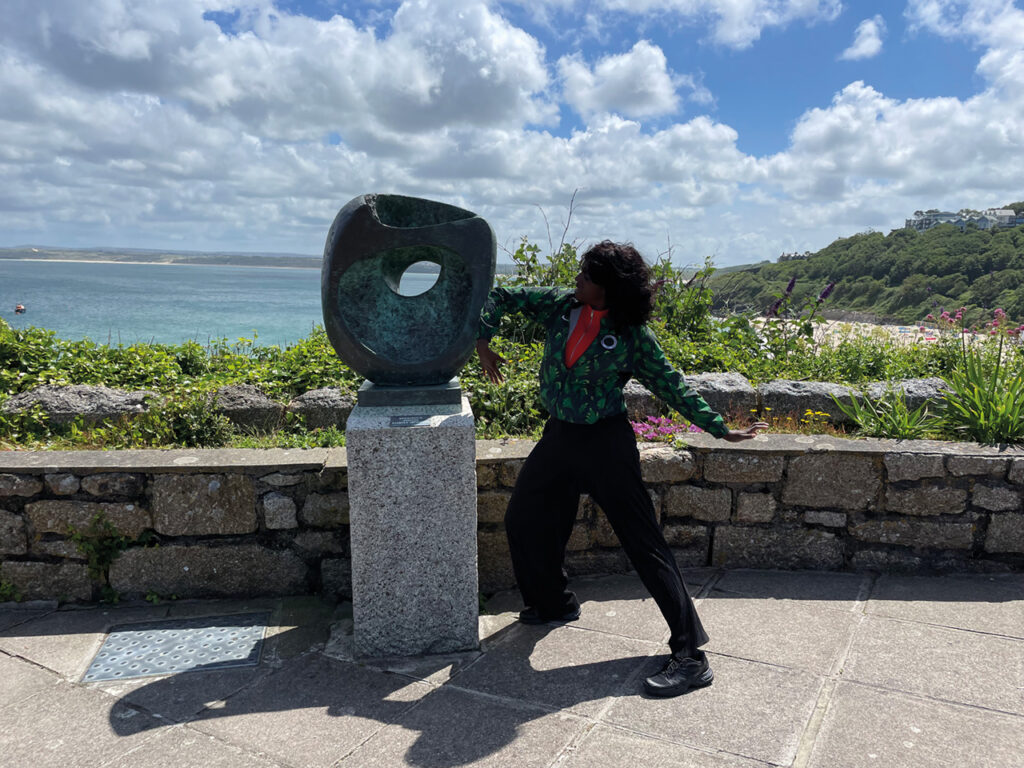Snow and the spiritual
Multidisciplinary artist Nwando Ebizie is firmly rooted in the landscape of the Lancashire-Yorkshire border where she lives. But in her work she travels dazzlingly through time and space
Originally from Oldham and of Nigerian heritage, Nwando Ebizie’s work spans music, dance, sound art, immersive installations, performance and more. Her influences range from Haitian Vodou and the ritual practices of the Candomblé religion in north-east Brazil to the 12th century German mystic Hildegard of Bingen, the fairy tales of Angela Carter and the feminist writings of Jungian psychoanalyst Clarissa Pinkola Estés, who wrote the seminal text Women Who Run with the Wolves.
“I’m obsessed by the hills and rocks of the moors around where I live,” she says. “But I also have a strong and complex sense of belonging to African and particularly Igbo cultures, a mythic sense of being related to the African diaspora that spans out in lots of different directions, from the enslaved in the Americas to me here on the Lancashire border.”
When Ebizie performs, she is a celebrant who conjures up a spirit, often from the ritual cultures of the Black Atlantic with their rich pantheon of characters and archetypes.
Her powerful personas challenge and investigate the lies from colonial times – and persist today – that Africa had no culture, no spirituality, no art.
“Candomblé, for example, is a beautiful part of the African diaspora that is only just beginning to be celebrated,” she says.
Ebizie also creates neurodiverse immersive installations inspired by her own neurological visual snow syndrome. This is an under-researched condition that causes trails or dots of light across the field of vision, a bit like the static on an old TV set or a pointillist painting.

“I’ve had it since I was a child, but when I’d ask someone, when you look at the sky, does it look all sparkly? they’d brush me off. It’s like constant whizzy dots, like the after-images effect you get around a candle flame, but it’s there all the time and not only from light-emitting sources,” she explains. “People offer different explanations and possibilities because it’s not in our way to accept different perceptions. But it’s had a profound effect on my work.”
Neurodiversity and alternative perceptions led to her interest in Hildegard, who had visions of what she called “the shade of the living light”. “What’s fascinating about Hildegard is that her visions are documented with illustrations. She’s not a character in my art the way some of my other iterations are, but I want to draw people into her essence.”
A recent acoustic commission, The Garden of Circular Paths, at the Hepworth Wakefield was a sonic response to Barbara Hepworth’s stone sculptures.
“Hepworth spoke eloquently about Yorkshire and her formative visions out on the moors, so I feel a really strong connection with her. There’s a kind of spiritual aspect to it, and I’m interested in creating numinous, spiritual experiences that can have a profound effect and live on in some way.
“Sound is spatial, so it affects your sense of space and adds another layer of experience to being face to face and body to body with the sculptures.
“There’s a laziness in the way most of society connects with the senses. Art doesn’t have to be purely visual – there’s a massive space with realms of possibilities. I’m interested in accessibility, not as a right-on add-on, but to enable everybody to enjoy art in all its forms. If art is purely visual what about blind people, for instance?”

Leave a reply
Your email address will not be published.